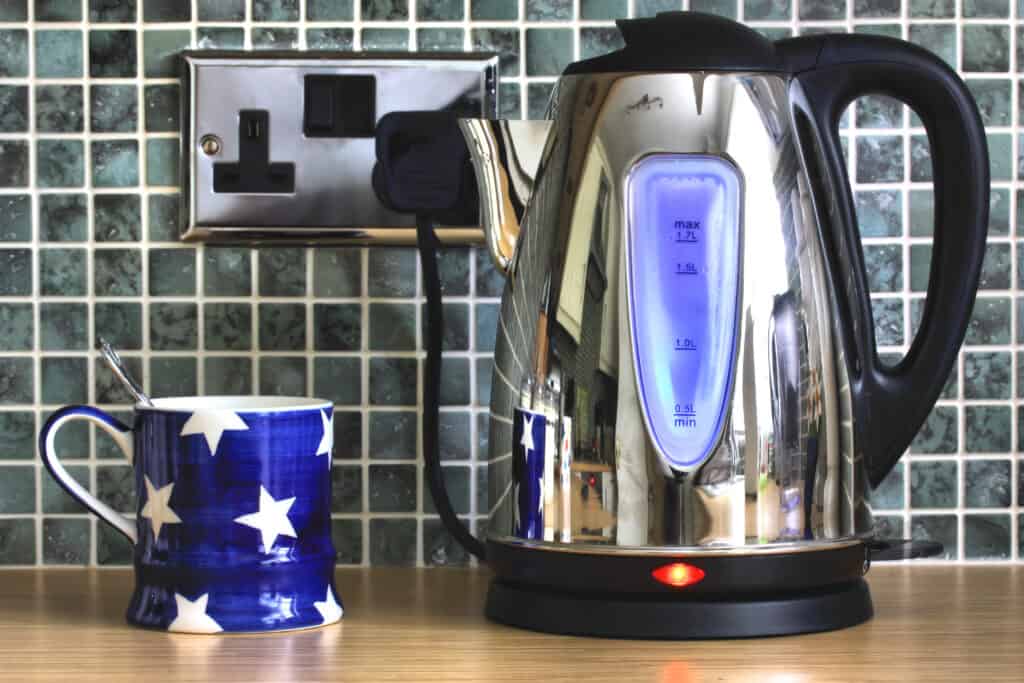If you’ve ever wondered whether all kettle leads are the same, the answer is no. While they may look similar, there are differences in the type of cable used, the amp rating, and the fuse.
When it comes to the cable, thicker cables are rated for higher amps, while thinner ones are suitable for smaller loads like monitors and speakers. The fuse is also rated for the cable and not the device, so it’s important to check the rating on the cable to ensure it’s suitable for the device you’re using it with.
What is a Kettle Lead?
A kettle lead, also known as a UK mains lead, IEC cable, or power lead, is a type of cable commonly used to power electronic devices such as computers, monitors, and electric kettles. The cable features an IEC connector on one end and a three-pin UK plug on the other.
Kettle leads come in different lengths, typically ranging from 1 to 3 meters, to suit different needs. The cable is usually made of copper wire, with a plastic insulation covering. The thickness of the cable can vary, with thicker cables rated for higher amps and thinner cables rated for lower amps.
The fuse in a kettle lead is an important safety feature that protects the device from electrical damage and prevents fires. The fuse rating is usually printed on the plug or cable, and it should match the device’s power requirements. Using a fuse with the wrong rating can cause the cable to overheat and potentially start a fire.

Different Types of Kettle Leads
Standard Kettle Leads
Most kettle leads are standard and have an IEC connector type 13. These are the most commonly used type of kettle lead and are suitable for most electrical devices. They are typically black in color and come in different lengths.
Standard kettle leads are made with copper conductors and PVC insulation. They have a maximum voltage rating of 250V and a maximum current rating of 10A. They are also fitted with a fuse to protect the device from power surges.
High-Performance Kettle Leads
High-performance kettle leads are designed for devices that require a higher power output than standard devices. They have an IEC connector type 15 and are suitable for high-temperature kettles, industrial machines, and other high-power devices.
High-performance kettle leads are made with thicker copper conductors and high-temperature insulation. They have a maximum voltage rating of 250V and a maximum current rating of 16A. They are also fitted with a fuse to protect the device from power surges.
Custom Kettle Leads
Custom kettle leads are made to order and are designed to meet specific requirements. They are usually made for industrial machines, medical equipment, and other specialized devices that require a unique power supply.
Custom kettle leads can be made with different lengths, colors, connectors, and insulation materials. They can also be made with different voltage and current ratings to meet the specific needs of the device.
Factors to Consider When Choosing a Kettle Lead
When choosing a kettle lead, there are several factors that you need to consider to ensure that you get the right one for your needs. Here are some of the key factors to keep in mind:
Cable Length
The length of the cable is an important consideration, as you need to ensure that it is long enough to reach from the kettle to the power outlet. Most kettle leads come in standard lengths of 1.5m or 2m, but you can also find longer or shorter cables if needed.
Fuse Rating
The fuse rating is another important factor to consider, as it determines the amount of current that can safely flow through the cable. Most kettle leads come with a 13A fuse, which is suitable for most household appliances. However, if you are using a high-powered kettle or other appliance, you may need a higher-rated fuse.

Amp Rating
The amp rating of the kettle lead is also important, as it determines the amount of current that the cable can safely handle. Most kettle leads have an amp rating of around 10A, which is suitable for most household appliances. However, if you are using a high-powered kettle or other appliance, you may need a higher-rated cable.
IEC Connector Type
The IEC connector type is the type of connector that plugs into the back of the kettle or appliance. Most kettle leads use the IEC type 13 connector, which is suitable for most household appliances. However, if you are using a high-temperature kettle or other appliance, you may need a different type of connector, such as the IEC type 15.
Uses of Kettle Leads
For AV Devices
Kettle leads are commonly used to power AV devices such as TVs, DVD players, and gaming consoles. The IEC type 13 connector is the most common connector used for AV devices. These cables are typically 1-2 meters long and come with a standard UK plug. Make sure to check the power requirements of your device before choosing a kettle lead.
For Speakers
Kettle leads are also used to power speakers. The IEC type 13 connector is again the most common connector used for speakers. These cables are typically shorter than those used for AV devices and come with a standard UK plug. Make sure to check the power requirements of your speakers before choosing a kettle lead.
For Other Devices
Kettle leads can also be used to power other devices such as computers, printers, and lamps. The IEC type 13 connector is again the most common connector used for these devices. Make sure to check the power requirements of your device before choosing a kettle lead.
It is important to note that not all kettle leads are the same. While the connectors may be the same, the fuses used in the plug may vary depending on the device the lead is being used for. Make sure to choose the correct fuse for your device to ensure safe and reliable operation.
When choosing a kettle lead, make sure to check the length of the cable. If you need a longer cable, consider purchasing an extension lead instead of using multiple kettle leads. This will help reduce the risk of electrical fires and make it easier to manage your cables.
In summary, kettle leads are versatile cables that can be used to power a variety of devices. Make sure to choose the correct cable for your device and check the length and fuse requirements before purchasing.

Conclusion
When it comes to kettle leads, it can be difficult to determine if they are all the same. While the physical appearance of the leads may be similar, there are differences in the fuses used and the type of IEC connector used to power different devices.
It’s important to consider the specifications of the device you are using and ensure that the kettle lead you choose is compatible with it. Using the wrong kettle lead could potentially damage your device and even create a safety hazard.
When purchasing a kettle lead, it’s a good idea to check the specifications of the device you will be using it with and ensure that the lead you choose meets those specifications. Additionally, it’s important to purchase kettle leads from reputable sellers to ensure that you are getting a high-quality product that meets safety standards.




